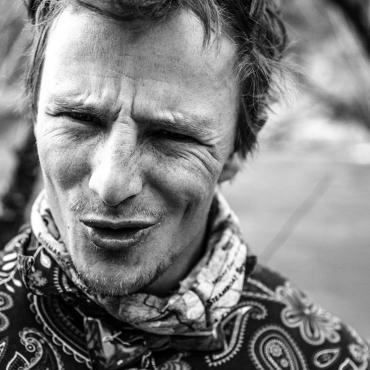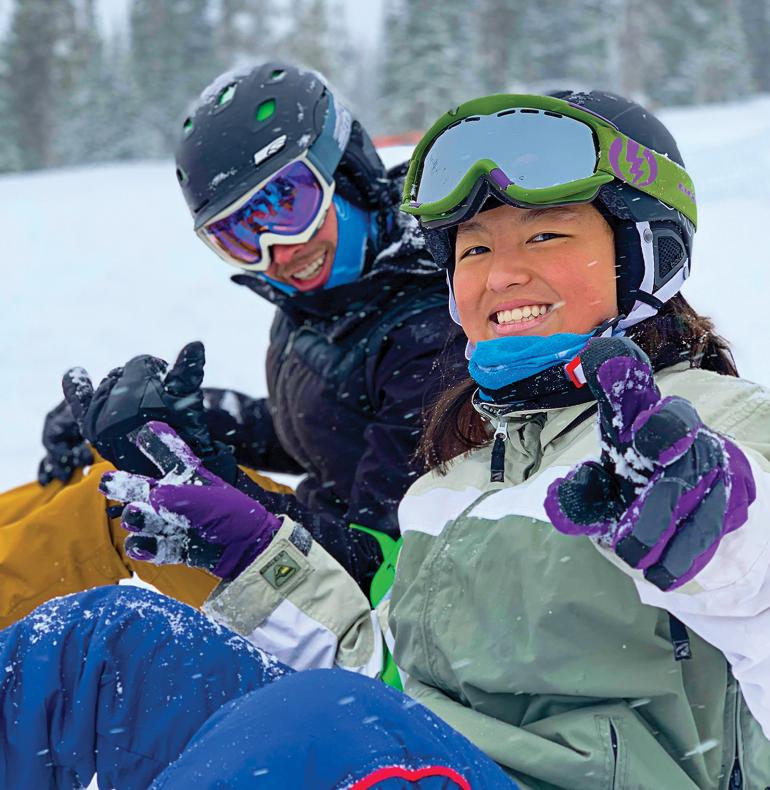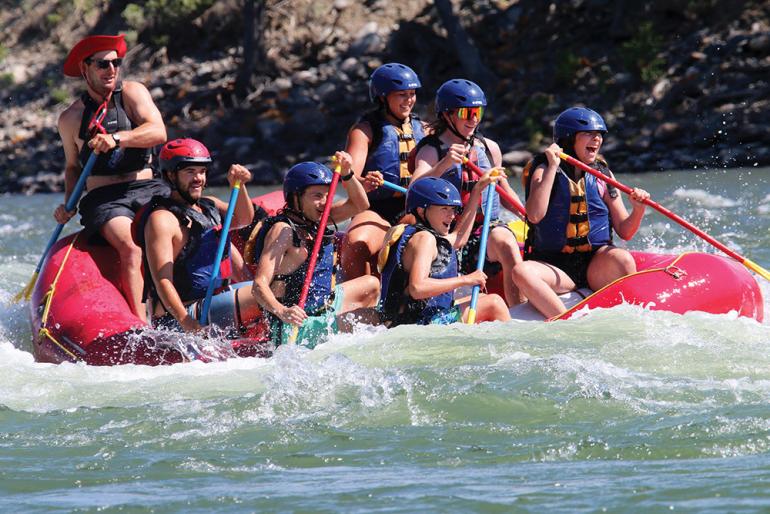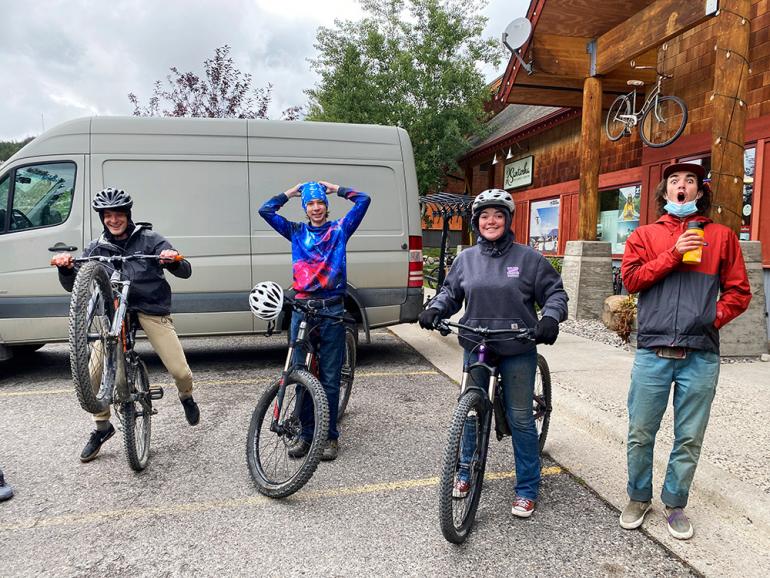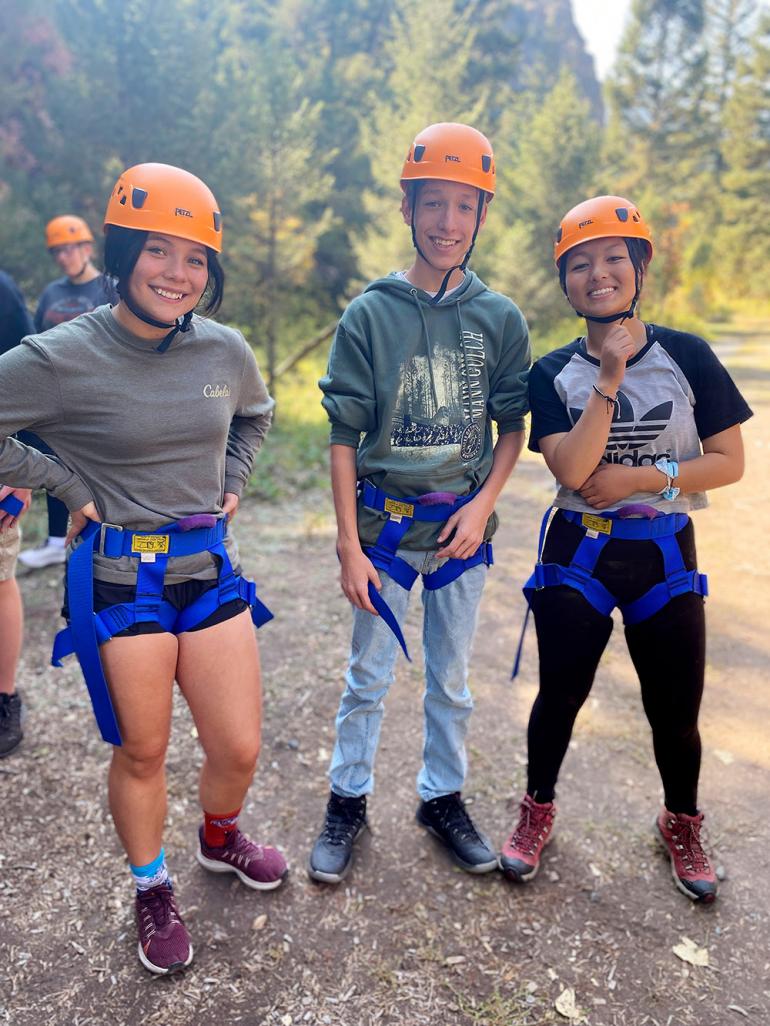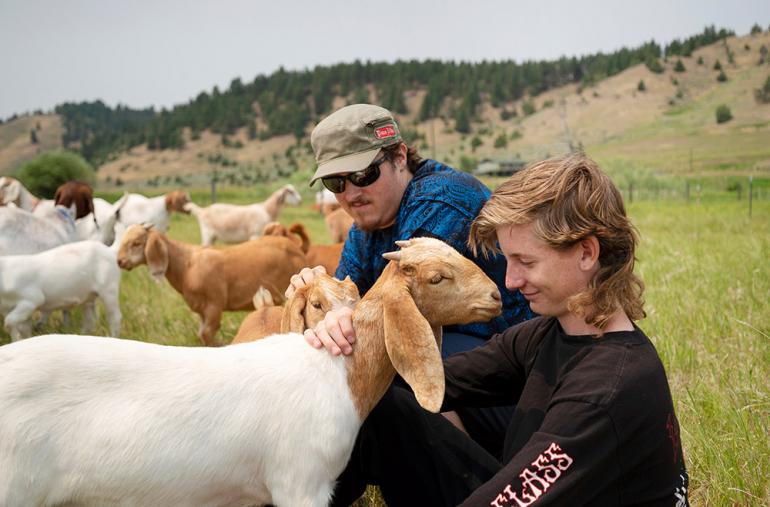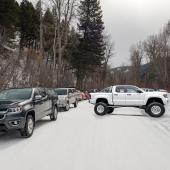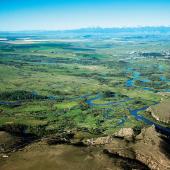Guiding Light
Hometown Heroes, part three.
There’s an office space downtown with a mini skatepark outside of it. On the wall behind this concrete playground is a mural decorated with vibrant colors and twisting shapes intersecting a natural landscape. In the parking lot out back, there’s a fleet of vehicles—GMC Express Vans and Yukons—with license plates that read BYEP. I count 10 in total. This is the building of Big Sky Youth Empowerment.
Inside, the architecture is modern. There’s a wide hallway that circles an island of rooms, cozy nooks with art, Christmas lights, and comfy chairs and couches arranged in a circle. One room has yarn strung across it in random directions. It’s a maze that aims to teach participants how to ask for help. A whiteboard in the room I’m in has short phrases in cloud bubbles scattered across the top. “Be present. Be respectful. Be committed to growth. Be mindful.”
I meet A and Taylor, 11th-graders entering their third and fourth years at BYEP. Though they are only two of their group’s normal seven to show up on Tuesday nights, the room bustles with energy. Erratic tangents, lighthearted quips, and cheery laughter fill the air. They’re comfortable discussing everything from climbing fears to coming out—even with me, who they’ve just met. But it hasn’t always been that way.
I would be very lonely without BYEP. I honestly would probably not be alive.
In the late 1990s, recent MSU graduate Pete MacFadyen was just another private-practice therapist with a focus on adolescents. He hosted hour-long counseling sessions once a week. “In order to end up in my office in 1999, something was not working in your life,” Pete told me. “Whether it was the relationship with your parents, the relationship with your friends, your grades were dropping, it could’ve been any number of things.”
But Pete noticed a pattern. “It just struck me that everyone I knew, all of the people I would qualify as my friends, were essentially ‘happy’ people,” he said. “And the common theme was that all of them had an amazing relationship with the natural world. Here I am, sitting in these counseling sessions with a kid, court-ordered to see me, and he doesn’t even know what a powder day is. He doesn’t know what catching a trout is. He doesn’t know what floating through House Rock is like.”
With this realization, Pete made it a goal to incorporate the outdoors as an essential part of his practice, and in 2001, BYEP was born. “The vision was to create an opportunity for teenagers who were experiencing barriers to success,” he said. What started as a 10-week outdoor-mentor program on a shoestring budget has blossomed into one of Bozeman’s brightest lights for youth experiencing hardship. Just ask Taylor. “I would be very lonely without BYEP,” he says. “I honestly would probably not be alive.”
BYEP now hosts teenagers for 10 hours a week, 36 weeks out of the year. They have a full-time staff of 12, as well as 43 volunteer mentors who donate a collective 150 hours each season. They go whitewater rafting in the summer, rock climbing in the fall, and skiing in the winter. And BYEP provides the means for all of it. In their gear room, shelves of skis, snowboards, and boots fill the walls from floor to ceiling. There are helmets and goggles and wet-weather clothing hanging from racks. With the help of sponsors, the nonprofit offers every piece of equipment necessary for all their outdoor outings. Every winter, all the kids and mentors ski at Big Sky for 10 weekends. “All of my gear is BYEP gear,” Taylor says. “If I didn’t have it, I would never ski.”
The vision was to create an opportunity for teenagers experiencing barriers to success.
Pete told me that one of his main goals from the beginning was to keep the program 100 percent scholarship-based. If a kid entered the program, he or she would be outfitted from head to toe. “The financial barrier to the outdoors is quite high—just look at the price of a day ticket anymore,” Pete explains. “If one of the barriers to access is ‘I need a snowboard,’ we remove that barrier. If it’s ‘I need snow pants,’ we remove that barrier.”
The program has three stages: Traverse (grades seven and eight), Approach (freshman and sophomores), and Crux (juniors and seniors), with an Ascent option for post-high-school grads. They do wellness workshops Monday-Thursday. Sundays are adventure days.
Taylor and A tell me about a horseback trip up Specimen Creek. They tell me about rock climbing outside for the first time, and an overnight rafting trip on the Yellowstone where it poured rain while they sang the entirety of Bohemian Rhapsody. Through their stories, it’s obvious that outdoor experiences have played a significant role in the improvement of their wellbeing. “I’ve been exposed to a lot of adventure—things I wouldn’t have even thought to do,” A says.
They talk about how good it feels to be a part of a team, to be outside, to connect with someone even if they’re scared to do the activity, “like belaying a friend even if I don’t want to climb the route,” Taylor says.
“I notice it with skiing and snowboarding,” A goes on. “You can completely bring a connection with someone to the next level, even if you’ve never met them before.”
We’ve only been chatting for an hour and I feel as if they’ve brought their connection with me to the next level. By how relaxed and open both of them are, I would’ve never guessed they were experiencing existential issues. The term “troubled youth” is not one that comes to mind.
“I was struggling with friend stuff before BYEP,” Taylor says. “But now, I feel a lot more included. Now, everyone’s my friend.”


